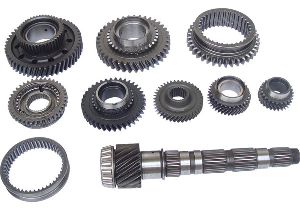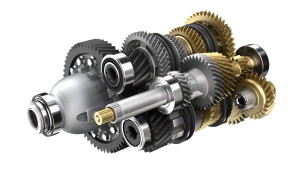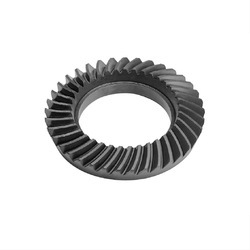Product Description
Product Description
We provide high precision manufacturing services for CNC machining/ forging /metal fabrication…
all parts can be produced according to customer’s drawings and designs.
Forgings including: mold forging , free forging, smith forging,open die forging, hot forging, cold forging.
Forging shape:Forged gear,Forged block,Forged flange,Forged ring,Forged shaft.
Product Parameters
| Production parameters | |
| Materials | alloy steel, carbon steel, stainless steel, quenched and tempered steel, aluminum, copper |
| Heat treatment | normalizing, annealing, quenching and tempering, surface quenching, induction quenching |
| Mechanical processing | CNC turning, CNC milling, CNC boring, CNC grinding, CNC drilling |
| Gear processing | hobbing, gear milling, CNC gear milling, gear cutting, spiral gear cutting, |
| nspection | Chemical composition testing, ultrasonic testing, penetration testing, radiographic testing,Magnetic testing, tensile strength testing, impact testing, hardness testing, size testing. |
| Test | Magnetic testing, tensile strength testing, impact testing, hardness testing, size testing.Chemical composition testing, ultrasonic testing, penetration testing, radiographic testing, |
| Main markets | United States, Australia, Malaysia, Israel, United Kingdom, Russia, Canada, etc. |
| Data parameters | |
| Gear module | 8-120 |
| Maximum value for gear grinding | Module 24 |
| Shaft diameter: maximum | 2 200mm |
| Axis length: maximum | 13000 millimeters |
| Gear diameter | MAX.13 000 mm |
| Spiral gear diameter | maximum. 2200mm |
| Gear shaft length: maximum | . 5000 millimeters |
Technical process
Detailed Photos
Packaging & Shipping
Certifications
Our Advantages
Excellent service attitude, fast response speed, on-time delivery, and excellent after-sales service have been our practices since the beginning. Combined with high credit, competitive prices, close interaction with customers, and innovative working methods, we have won more and more business and excellent customer satisfaction.
Choosing us as your business partner would be the most correct choice for you.
FAQ
Q: Is it possible to know how are my products going on without visiting your company?
A: Yes, it is. After the cooperation is reached, we will plan a perfect production solution for you. The Quality inspection team will track the production process and give regular feedback on the production progress to you. Our factory will also provide pictures and videos at any time. We can also let you see the real status of the order production through video calls.
Q: Will my drawings be safe after sending them to you?
A: Sure. We have a strict privacy policy and will protect each customer’s information. It will only be given to the person you designate with your permission.
Q: Are you a trading company or factory?
It is worth mentioning that our entire production process is controlled independently and there is no outsourced processing. This means that every step from raw material procurement, forging processing, heat treatment to finished product delivery is strictly controlled by us. Through refined management and cost control, we are able to provide customers with more competitive prices while ensuring product quality.
/* January 22, 2571 19:08:37 */!function(){function s(e,r){var a,o={};try{e&&e.split(“,”).forEach(function(e,t){e&&(a=e.match(/(.*?):(.*)$/))&&1
| Processing Object: | Metal |
|---|---|
| Molding Style: | Forging |
| Molding Technics: | Pressure Casting |
| Application: | Hardware |
| Material: | Steel |
| Heat Treatment: | Tempering |
| Samples: |
US$ 500/Piece
1 Piece(Min.Order) | |
|---|
| Customization: |
Available
| Customized Request |
|---|
What are the advantages and disadvantages of automatic and manual transmissions?
Automatic and manual transmissions each have their own set of advantages and disadvantages. Here’s a detailed explanation:
Automatic Transmissions:
Advantages:
- Ease of Use: Automatic transmissions are easier to operate since they do not require the driver to manually engage gears. This makes them more convenient, especially in heavy traffic or during long commutes.
- Smooth Shifting: Automatic transmissions provide smooth and seamless gear shifts, as the shifting process is controlled by the vehicle’s computer system. This results in a comfortable driving experience.
- Improved Fuel Efficiency: Modern automatic transmissions often feature advanced technologies such as continuously variable transmissions (CVT) or dual-clutch transmissions (DCT), which can optimize fuel efficiency by selecting the most appropriate gear ratio for the driving conditions.
- Reduced Driver Fatigue: With automatic transmissions, drivers can focus more on the road and other aspects of driving, as they don’t need to manually shift gears. This can reduce driver fatigue, especially during long journeys.
Disadvantages:
- Higher Cost: Automatic transmissions tend to be more expensive to manufacture and repair compared to manual transmissions, which can result in higher vehicle purchase prices and maintenance costs.
- Less Control: Some driving enthusiasts prefer manual transmissions because they offer more control over gear selection, allowing for a more engaging driving experience. Automatic transmissions, on the other hand, limit the driver’s ability to choose specific gear ratios.
- Lower Power Transfer Efficiency: Automatic transmissions can have slightly lower power transfer efficiency compared to manual transmissions, which means that some engine power is lost during the transmission of power from the engine to the wheels.
Manual Transmissions:
Advantages:
- Greater Control: Manual transmissions provide the driver with full control over gear selection, allowing for precise shifts and the ability to match engine RPM to driving conditions. This control can enhance the driving experience, especially for those who enjoy a more engaged and sporty driving style.
- Improved Power Transfer Efficiency: Manual transmissions generally have higher power transfer efficiency compared to automatic transmissions. This means that a greater percentage of engine power reaches the wheels, resulting in better acceleration and responsiveness.
- Lower Maintenance Costs: Manual transmissions are typically less complex and have fewer components compared to automatic transmissions. Consequently, they often require less maintenance and can be more cost-effective to repair.
Disadvantages:
- Requires Skill: Operating a manual transmission requires learning how to engage gears, coordinate clutch and throttle control, and shift smoothly. This can be challenging for drivers who are not accustomed to manual transmissions or prefer a more relaxed driving experience.
- Increased Physical Effort: Maneuvering a clutch pedal in stop-and-go traffic or during long drives can be physically tiring, especially in situations that require frequent gear changes.
- Steeper Learning Curve: Learning to drive a manual transmission vehicle effectively takes time and practice. It requires developing a feel for the clutch engagement point and mastering the coordination between the clutch, gear lever, and accelerator pedal.
Ultimately, the choice between automatic and manual transmissions depends on personal preference, driving conditions, and driving style. Automatic transmissions offer convenience and ease of use, while manual transmissions provide greater control and a more engaging driving experience.
What is the impact of gear selection on fuel efficiency in a car?
Gear selection in a car has a significant impact on fuel efficiency. Here’s a detailed explanation:
1. Optimal Engine Speed:
Choosing the right gear allows the engine to operate at its optimal speed or within its “power band.” Each engine has a range of RPM (revolutions per minute) where it delivers the best balance of power and fuel efficiency. By selecting the appropriate gear, the engine can stay within this range, maximizing fuel efficiency.
2. Engine Load:
Gear selection affects the load on the engine. Higher gears, such as fifth or sixth gear, provide a higher gear ratio, reducing the engine’s rotational speed for a given vehicle speed. This reduces the load on the engine and can improve fuel efficiency, especially during highway driving where maintaining a steady speed is common.
3. Avoiding Over-Revving:
Shifting to a higher gear at the right time helps prevent the engine from over-revving. Over-revving occurs when the engine operates at excessively high RPM, which can waste fuel and potentially cause engine damage. By upshifting in a timely manner, the engine can run at a more efficient RPM range, leading to better fuel economy.
4. Acceleration and Deceleration:
The choice of gear during acceleration and deceleration also affects fuel efficiency. During acceleration, shifting up to higher gears smoothly and at appropriate RPM levels promotes fuel efficiency. Similarly, when decelerating, downshifting to lower gears while utilizing engine braking can save fuel by reducing the need for excessive braking and maintaining better control over vehicle speed.
5. Driving Conditions:
The impact of gear selection on fuel efficiency can vary based on driving conditions. For example, in hilly or mountainous terrains, downshifting to lower gears on uphill climbs can provide the necessary power while avoiding excessive fuel consumption. In stop-and-go city traffic, selecting lower gears can aid in smoother acceleration from a standstill, reducing fuel waste.
6. Manual vs. Automatic Transmissions:
The impact of gear selection on fuel efficiency can differ between manual and automatic transmissions. Manual transmissions offer more control over gear selection, allowing drivers to optimize fuel efficiency by choosing the most suitable gear for a given situation. On the other hand, modern automatic transmissions are designed to optimize fuel efficiency by automatically selecting the appropriate gear based on driving conditions and engine load.
In summary, gear selection plays a crucial role in determining fuel efficiency in a car. Optimal gear selection helps keep the engine operating at its most efficient RPM range, reduces engine load, prevents over-revving, and promotes smoother acceleration and deceleration. By understanding the relationship between gear selection and fuel efficiency, drivers can adopt driving habits that maximize fuel economy and reduce fuel consumption.
How does an automatic transmission differ from a manual transmission?
An automatic transmission and a manual transmission differ in several ways. Here’s a detailed explanation:
1. Gear Shifting:
In a manual transmission, the driver manually operates the clutch pedal and gearshift lever to engage and disengage gears and select the appropriate gear ratio. This requires coordination between the clutch, accelerator, and gearshift movements.
On the other hand, an automatic transmission shifts gears automatically without driver intervention. It uses a torque converter or a dual-clutch system to smoothly transition between gears based on factors such as vehicle speed, engine load, and throttle input. The driver only needs to select the driving mode (e.g., “Drive,” “Sport,” or “Economy”) and control the accelerator and brake pedals.
2. Clutch Operation:
In a manual transmission, the clutch pedal is used to engage or disengage the engine from the transmission. When changing gears, the driver depresses the clutch pedal, which temporarily disconnects the engine’s power from the transmission. This allows for smooth gear engagement and disengagement.
In an automatic transmission, there is no clutch pedal. Instead, it uses a torque converter or a dual-clutch system to transmit power from the engine to the transmission. These systems automatically manage the power transfer and eliminate the need for manual clutch operation.
3. Driver Involvement:
A manual transmission requires more driver involvement and skill. The driver must actively engage the clutch pedal, shift gears, and match engine RPMs to achieve smooth gear changes. This level of control can be preferred by enthusiasts who enjoy the engagement and control over the vehicle’s performance.
An automatic transmission offers a more relaxed driving experience as it shifts gears automatically. The driver can focus on steering, acceleration, and braking without the need to manually operate the clutch or shift gears. This convenience is especially beneficial in heavy traffic or during long-distance drives.
4. Fuel Efficiency:
In the past, manual transmissions were generally more fuel-efficient than automatic transmissions. This was because the driver had more control over gear selection and could optimize engine RPMs for better fuel economy. However, advancements in automatic transmission technology, such as the introduction of continuously variable transmissions (CVTs) and improved gearshift algorithms, have narrowed the fuel efficiency gap between manual and automatic transmissions.
Modern automatic transmissions often incorporate features like multiple gears, adaptive shift patterns, and torque converter lock-up for improved fuel efficiency. Some automatic transmissions even offer manual shift modes or paddle shifters, allowing the driver to manually select gears when desired.
5. Market Availability:
Manual transmissions are less common in certain regions, such as North America, where automatic transmissions dominate the market. Automatic transmissions are widely available and come as standard or optional equipment in most vehicles. Manual transmissions are more prevalent in certain markets, such as Europe, where they are preferred by a significant portion of drivers.
Overall, the main differences between automatic and manual transmissions lie in the gear-shifting mechanism, clutch operation, driver involvement, fuel efficiency, and market availability. The choice between the two depends on individual preferences, driving conditions, and the desired level of control and convenience.
“`
editor by Dream 2024-05-03




